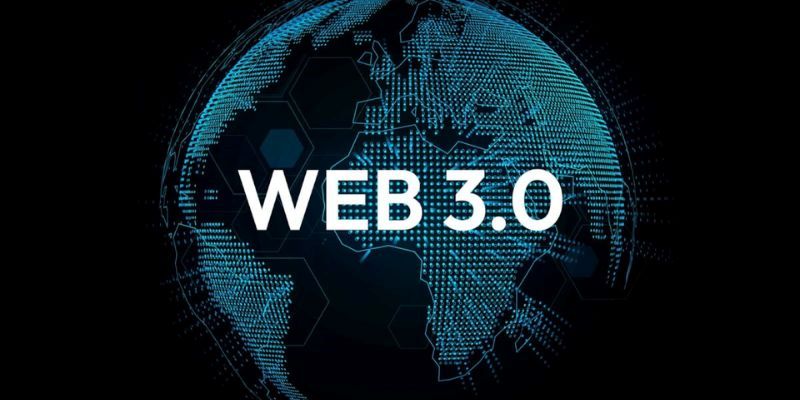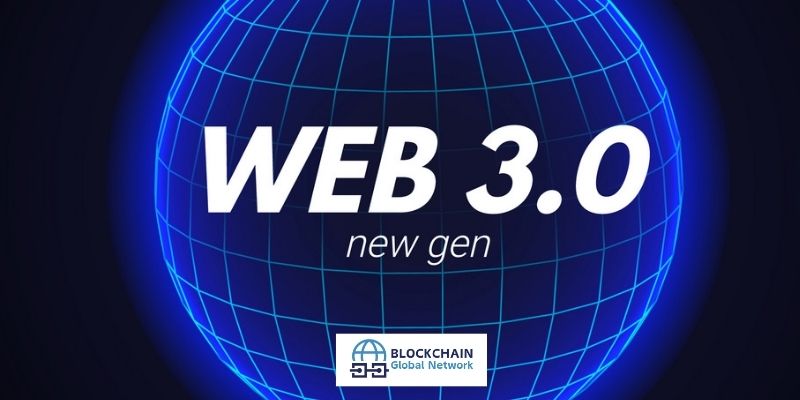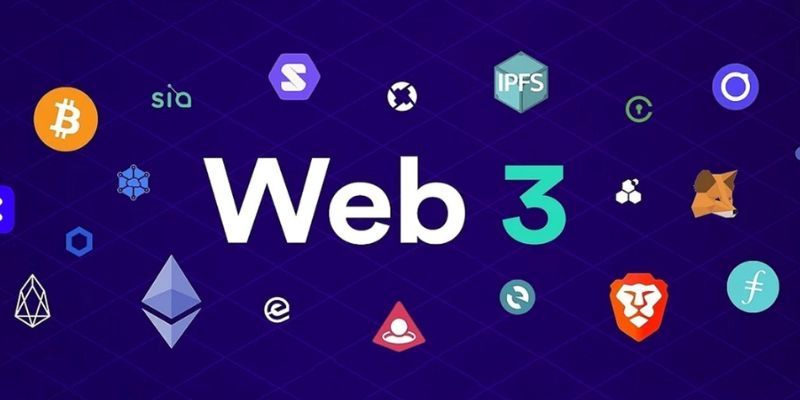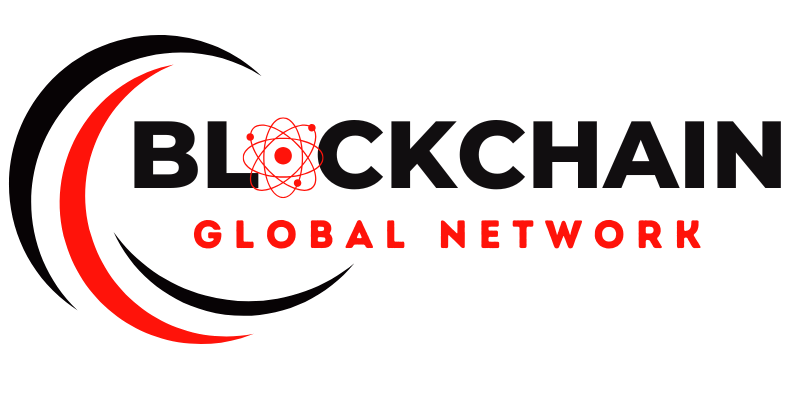The Web3 ecosystem is revolutionizing the internet as we know it, ushering in a new era of decentralization, ownership, and trust. At its core lies blockchain technology, the backbone of this transformative movement. One of the most exciting manifestations of Web3 is the rise of NFT marketplaces, where unique digital assets are bought, sold, and traded, providing creators and collectors with unprecedented opportunities.
The concept of web3 ecosystem
What is a web3 ecosystem? Let’s begin by delving into the definition of web 3.0, also known as internet 3.0, which represents the next stage in the evolution of the worldwide web. Initially, web 1.0, the first version of the internet, aimed to provide content to users without allowing them to share their own. Then, in the mid-2000s, web 2.0 took over, and social media platforms emerged, granting users the ability to generate their own content and share it with others.
Despite the advantages of web 2.0, including communication and user-generated content, it had some significant drawbacks. A handful of large corporations, such as Google, Apple, and Amazon, began to store a vast amount of people’s sensitive data, which raised concerns regarding security and privacy. Facebook, which is now known as Meta, is a noteworthy example of this issue, as they allowed Cambridge Analytica to collect personal data without consent from millions of users. Campaigners then used this data to advertise politicians, including Ted Cruz and Donald Trump.

In contrast, web 3.0 is all about providing a personalized experience that improves people’s daily lives while also giving them more control over their data. With web 3.0, people will continue to generate content, but privacy and security will not be compromised. This is made possible by incorporating technologies such as artificial intelligence (AI), cloud and edge computing, and the Internet of Things (IoT) into the future of the internet.
In light of these developments, a web3 ecosystem is a startup that operates based on the principles of web 3.0, ensuring that people can trade data and information equitably and safely. A prime example of this is an NFT marketplace, which serves as a practical example of web 3.0 in action.
What is the NFT marketplace?
An NFT marketplace is a digital platform where users can buy and sell non-fungible tokens (NFTs), which are unique digital assets representing ownership of digital or physical items. These marketplaces function similarly to traditional online marketplaces, but instead of selling physical goods, they facilitate the exchange of digital art, music, videos, collectibles, and more.
NFT marketplaces operate on a blockchain, typically Ethereum, which ensures the security and transparency of transactions. When you purchase an NFT, you gain ownership of that specific digital item, recorded on the blockchain.
While the NFT market is still evolving, it has gained significant popularity, with platforms like OpenSea, Rarible, Mintable, and Zora leading the way. The market is expected to continue growing, attracting more creators, collectors, and investors.
How do the NFT marketplace and web3 marketplace come together?
NFT marketplaces are a prime example of Web3’s potential, leveraging blockchain technology to revolutionize digital ownership and trading. By utilizing blockchain’s immutable ledger, NFT marketplaces ensure secure and transparent ownership verification of unique digital assets. Smart contracts automate and enforce transaction terms, eliminating intermediaries and reducing costs.
Some platforms even embrace decentralized governance, giving users a voice in shaping the marketplace’s future. This synergy between NFT marketplaces and Web3 principles is creating a more user-centric, transparent, and secure environment for trading digital assets.

Architectural Components of Web3 NFT Marketplaces
- Web Application: A user-friendly interface that allows traders to interact with the marketplace, browse NFT listings, and execute transactions.
- Digital Wallet: A secure storage solution for NFTs and cryptocurrencies, enabling users to manage their assets and make payments.
- InterPlanetary File System (IPFS): A distributed file system that stores NFT data and metadata, reducing the load on the blockchain and improving scalability.
- Smart Contracts: Self-executing agreements coded on the blockchain that define the terms of NFT transactions, ensuring trustless and transparent exchange of ownership.
- Blockchain: The underlying distributed ledger technology that records all NFT transactions, providing an immutable and verifiable history of ownership and provenance.
The future of digital asset trading
The future of digital asset trading is a dynamic landscape, poised for significant growth and transformation. Increased institutional adoption, driven by the recognition of digital assets’ potential, is expected to bring greater liquidity and mainstream acceptance. Advancements in blockchain security and regulatory clarity will further bolster trust and attract a wider range of investors.
Decentralized exchanges (DEXs) are gaining momentum, offering traders more control and privacy while reducing reliance on centralized intermediaries. The integration of AI and machine learning will empower traders with sophisticated tools for optimizing strategies and enhancing market efficiency.
Tokenization of real-world assets, such as real estate and art, will democratize investment opportunities, creating new markets and expanding the scope of digital asset trading. Additionally, the rise of NFTs and the metaverse will open up exciting new avenues for trading digital collectibles and virtual experiences.
As interoperability solutions evolve, seamless trading and exchange of digital assets across different blockchain networks will become the norm. The future of digital asset trading is bright, promising a more inclusive, efficient, and innovative financial ecosystem.

The Web3 ecosystem, with its emphasis on decentralization and ownership, is poised to reshape the digital landscape. NFT marketplaces, as a prime example of Web3 applications, are unlocking new possibilities for creators, collectors, and investors alike. The future of digital asset trading lies in this decentralized ecosystem, where transparency, security, and user empowerment are paramount.
Stay ahead of the curve and explore the limitless potential of Web3 and NFT marketplaces with Blockchain Global Network.

RELATED POSTS
LooksRare NFT: A new generation NFT exchange
LooksRare NFT has quickly emerged...
The Evolution of Cryptocurrency and Blockchain Technology – 7 Things to Look Forward To
Cryptocurrency and Blockchain Technology have...
What is Crew3? Detailed guide to join and participate
Crew3 is a community platform...
Toby Airdrop: A complete guide to participation from A to Z
Participate in the Toby Airdrop...
BulbaSwap Airdrop: A unique investment opportunity in DeFi
BulbaSwap, a decentralized exchange (DEX)...
Can my Phantom Wallet be hacked?
Wondering, “Can my Phantom Wallet...
What is ETH Analysis? Trends, Predictions, and What’s Next for Ethereum
Ever wondered what makes Ethereum...
Passive Earnings with UPhone by U2U Network
UPhone by U2U Network is...
Mapping Opportunities with Funding Rate Heatmap
In the fast-paced trading world,...
What is the trading range of Kaspa standard deviation?
Are you interested in Kaspa...
Cryptocurrency Unveiled: Unlocking the Mysteries Beyond Blockchain
How is cryptocurrency different from...
What is Bitcoin Lightning Network? Revolutionizing Crypto Transactions
What is Bitcoin Lightning Network?...
CoinList and U2U Network – Partnering to Build the Future of Decentralized Infrastructure
The cryptocurrency market is witnessing...
Chillchat Game Airdrop – 4 Skills for Hunting ESSENCE Tokens and Primorden NFTs
Chillchat Game Airdrop not only...
Understanding the Stock to Flow Model – How to Optimize Investment
The Stock to Flow Model...
Is DeepSeek a Public Company?
Curious about the future of...